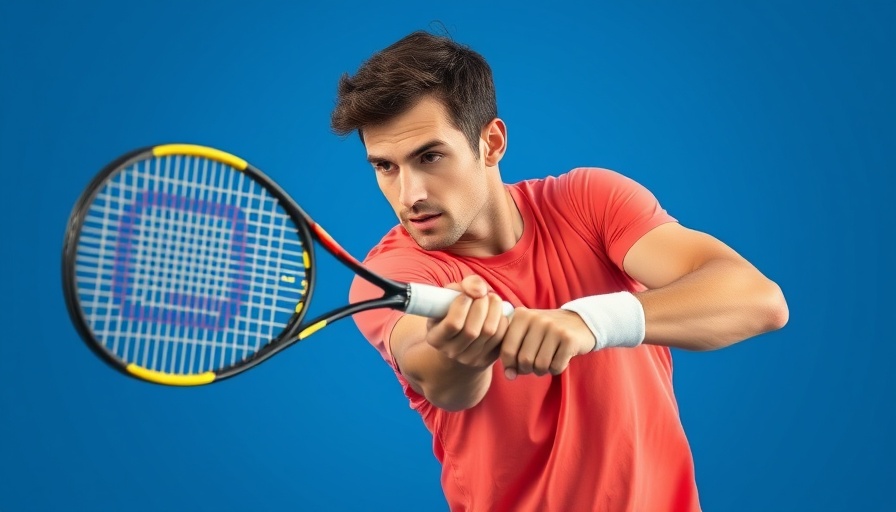
The Hidden Power of the Non-Dominant Arm in Tennis
If you've ever watched professional tennis players at work, you may have noticed something peculiar: their non-dominant arm, often left hanging or involved in the process of swinging, plays a critical yet underappreciated role in their forehand strokes. This article delves into the importance of that non-dominant arm, helping not just to illuminate its function but also to enhance your own game.
In 'What to do with the non dominant arm during a forehand,' the discussion dives into the critical role of the non-dominant arm while hitting a forehand, providing insights that sparked deeper analysis on our end.
Why the Non-Dominant Arm Matters
The non-dominant arm isn't just an accessory in your tennis swing; it plays a crucial role in maintaining balance and generating power. As the dominant arm drives the racket forward, the non-dominant arm engages in a coordinated dance that enhances stability and control. Without its involvement, the entire swing can feel stilted or awkward. The non-dominant arm helps create what tennis experts call a "unit turn" during your take-back phase. This action prepares you to rotate your upper body, a vital movement for effective weight transfer and shot accuracy.
Controlled Rotation Equals Power and Precision
One of the biggest challenges amateur players face is maintaining proper shoulder rotation. Using the non-dominant arm correctly allows you to pull back your elbow, effectively setting up your shoulder for the forward swing. If you grip the racket too tightly with the dominant hand for too long, the shoulders can become locked. This issue leads to a lack of rotation and, ultimately, a weaker shot. Learning to balance the grip allows a more fluid execution of forehands, resulting in powerful strikes that can dominate the court.
Timing Is Everything: The Grip Dilemma
Finding the right moment to let go of the racket can be tricky. Hold on for too long, and you risk being late in your swing; let go too soon, and you won't achieve the necessary range of motion. Striking a balance in where you let your fingers rest can enhance your shot’s efficacy. Ideally, you want your non-dominant hand to remain near the throat of the racket until your elbow points toward the ball. This technique allows a more extended kinetic chain, facilitating more explosive energy as you swing.
Creating Deception in Your Game
For advanced players, integrating the non-dominant arm can even open doors to strategic plays such as disguising drop shots. Just as a magician hides their tricks, an expert player can subtly alter their grip during the swing, keeping opponents guessing. This advanced move could offer an edge in close rally situations or tight matches. However, for beginners, introducing complexity might backfire; focusing on the basics and muscle memory with the non-dominant arm is paramount.
Practical Tips for Improvement
To reap the full benefits of your non-dominant arm, consider these practical insights:
- Practice with Purpose: Spend time in drills focusing solely on your non-dominant arm. Feel its connection to your body and swing.
- Video Analysis: Record your strokes to observe how the non-dominant arm plays into your shoulder rotation. Adjust as needed.
- Consistent Feedback: Work with coaches or experienced players who can provide real-time advice on positioning and timing.
Final Thoughts
In tennis, every element of your form matters—none more so than the involvement of your non-dominant arm during your forehand. By understanding its importance, you can enhance your performance on the court, hitting harder, aiming more accurately, and occasionally implementing a deceptive shot or two. Don’t underestimate the role of this often-overlooked component of your game; embrace the non-dominant arm, and elevate your tennis skills. Ready to take the leap? Start incorporating these strategies into your training and watch your game transform!
 Add Row
Add Row  Add
Add 




Write A Comment